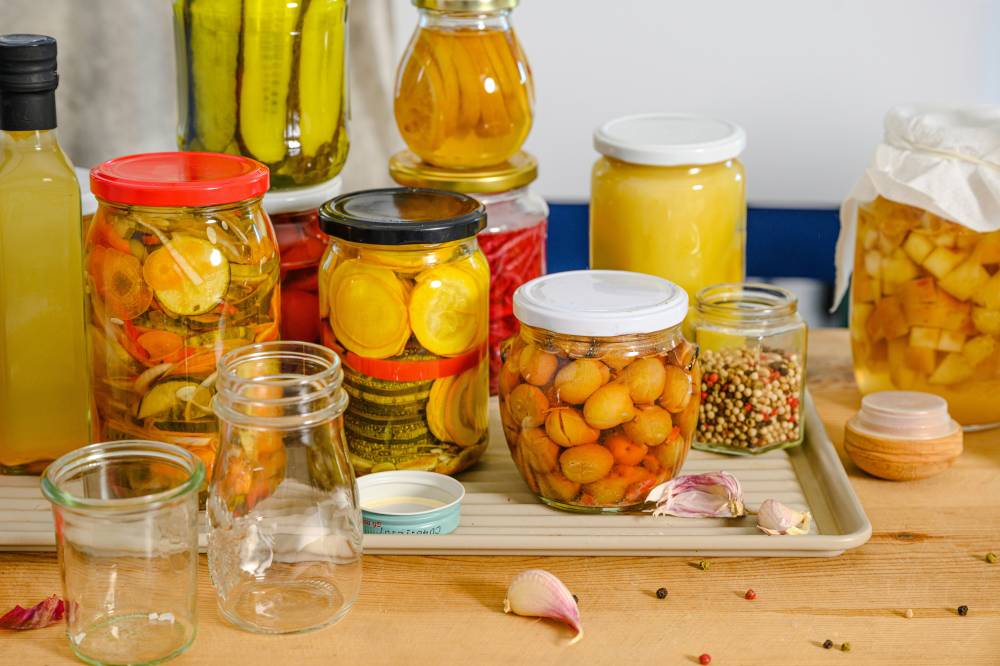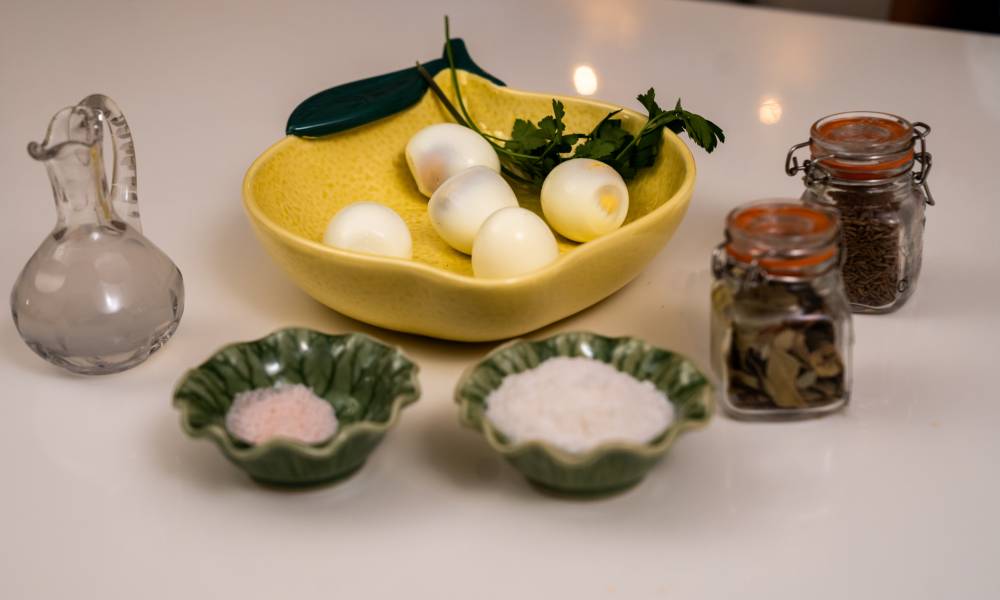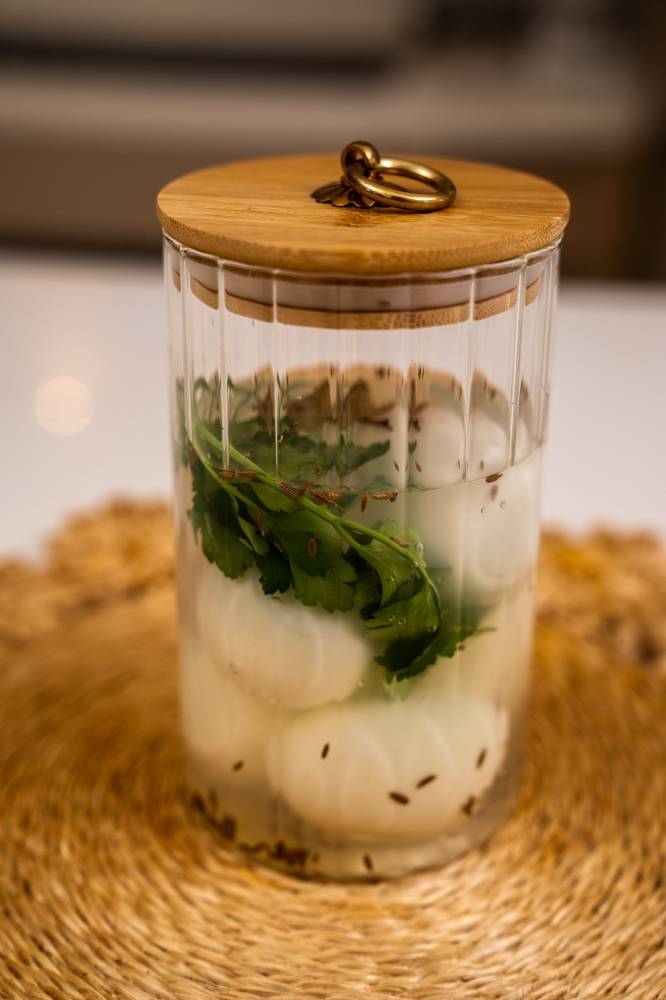The art (and science) of pickling

Long before refrigerators and freezers existed, people had to find ways to keep food from spoiling. Across the world, communities discovered a common solution: pickling.
A tradition borne of necessity
The process—soaking fruits or vegetables in an acidic brine made of vinegar or allowing them to ferment naturally—became a universal method of preservation. These days, there are still a fair number of people in the Philippines who do not have refrigeration, which is why, among the many things I teach in communities, I have been focused on food preservation and the extension of the shelf life of food.
Perhaps the most famous pickle in the Philippines is atchara—made from green papaya, followed by burong mangga from half-ripe mangoes—and burong mustasa from mustard leaves, which have both become pantry staples. In Japan, there’s tsukemono, in Korea, kimchi, and in India, spicy achar.
Each culture created its own twist using local ingredients, proving that pickling isn’t just a technique—it’s a reflection of place and tradition.
Originally born of necessity, pickling allowed communities to enjoy vegetables long after harvest season ended. In coastal towns, fish like tuyo and daing were also soaked in vinegar to prevent spoilage during long journeys. Over time, the practice evolved from mere preservation to a culinary art form, where flavor, color, and texture are just as important as longevity.
A little bit of science in every jar
Behind the familiar tang of pickled food lies a fascinating science, as pickling works in one of two ways: vinegar pickling or fermentation.
Vinegar pickling uses acid to create an environment too harsh for spoilage-causing microorganisms. Vegetables are submerged in a mixture of vinegar, salt, sugar, and spices. This method gives a quick, crisp result with a sharp, bright flavor. The recipe at the end of this article is one for pickled eggs. I chose these, as eggs are a staple in every household, often a part of ayuda packages. And pickling is a way to make them last longer.
Fermentation, on the other hand, relies on natural bacteria—mostly lactobacillus—to convert the sugars in food into lactic acid. This acid acts as a natural preservative, producing a more complex, sometimes sour taste. Fermented pickles develop layers of flavor over days or weeks, and the live bacteria that thrive in them offer a hidden bonus: They’re good for your gut.

The health benefits of pickling
Modern nutrition science is rediscovering what ancient cultures knew instinctively—fermented foods are powerful allies for health. The probiotics found in naturally fermented pickles help maintain a balanced gut microbiome, which is essential for digestion, nutrient absorption, and even mental well-being.
Studies show that people who regularly eat fermented foods may have stronger immune systems and fewer digestive issues. The live cultures in these foods promote healthy bacteria in the intestines, which, in turn, can reduce inflammation and help the body process nutrients more efficiently. While many Filipinos have become obsessed with K-drama-induced kimchi, we have forgotten that we have our own pickles.
Even vinegar-based pickles have their perks. Vinegar has been linked to improved blood sugar control, making it helpful for people managing diabetes or insulin resistance. It also promotes satiety—helping you feel full longer—making pickles a surprisingly useful companion for those aiming to manage their weight.
Moreover, pickled foods retain most of the vitamins and minerals of the original produce. Because the ingredients aren’t exposed to high heat, nutrients like vitamin C, potassium, and antioxidants remain intact. Add in herbs like turmeric or ginger—both known for their anti-inflammatory properties—and you have a condiment that nourishes as much as it delights.
A sustainable kitchen practice
Pickling also plays a quiet yet powerful role in reducing food waste. In a world where tons of fruits and vegetables go to waste every year, the simple act of preserving surplus produce can make a meaningful difference. It’s a practice that aligns with sustainability goals—minimizing waste, encouraging seasonal eating, and promoting mindful consumption.
Every jar of pickles on a pantry shelf is proof that traditional wisdom can support modern sustainability.
Pickling as a way to slow down
Beyond its practicality, pickling teaches patience. It’s a ritual that invites us to pause, chop vegetables carefully, mix brines, and wait for nature to do its quiet work. In a fast-paced world of instant gratification, the act of waiting for flavors to develop feels almost revolutionary.
Pickling, in its simplest form, is about preservation. But in a deeper sense, it’s about connection—to the earth that grows our food, to the ancestors who found ways to make it last, and to the communities that continue to share and celebrate it.

Pickled eggs
Ingredients
12 eggs, boiled and peeled
½ cup vinegar
1 cup water
¼ cup sugar
1 tsp salt
Herbs and aromatics (rosemary, garlic, and onions)
Procedure
1. Put the vinegar, water, salt, and sugar in a vessel. Mix well, making sure the solids are dissolved.
2. Add the eggs.
3. Add the aromatics and herbs.
4. Seal and keep for a minimum of 3 days before eating.

















